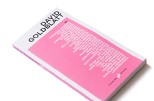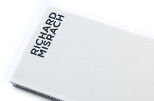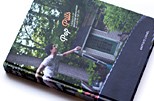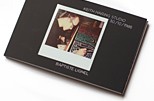- Author(s)
- B. Lignel & J. Miller
- Print Run
- 1000
- Production Date
- 01/11/2009
- Dimensions
- 22x33 cm
- Images
- 70
- Pages
- 64
- Paper
- Gardamat 170 g
- Type of print
- Offset
- Availability
- In stock
- 38,00 €
Baptiste Lignel
– Say the words "Coney Island" to just about any American and you will provoke a reaction, at the very least a spark of recognition. Whether from experience, retold stories of past generations or the personal, albeit generalized, identification and sense of ownership that legend generates, you will have touched on a piece of Americana. A jointly-owned American archetype. The river.
This is a project about that particular River. But these are images not of what is constant, the geographical elements of a well-known landmark, but of what is in constant change: the people. The flow of individuals who come to Coney Island and, by their interaction, affect its course over time. The water.
These images are of people who, out for a good time on a hot summer’s weekend, are caught in the paradox of being private in public; en famille in a crowd of strangers. My way of photographing is to respect that paradox.
I shoot from the hip, on-the-sly, never bringing the camera to my eye but letting it rest in the crook of my arm while my regard is turned elsewhere. I want to shoot as quickly as seeing, catching the first impression and freezing it (but it’s still just an impression). To minimize the photographic act itself to its bare essence.
Seeing a place by looking at the people who inhabit it; each in relationship with and dependent upon the other. We don’t see Coney Island, but what we see makes Coney Island.
Seeing a place by looking at the people who inhabit it; each in relationship with and dependent upon the other. We don’t see Coney Island, but what we see makes Coney Island.
Johnny Miller
– The amusement park had bee sold, it was about to close, living through its last and long summer season. Reacting to Baptiste Lignel’s images, I behaved like an archaeologist, who can only look at the "traces" of a civilisation to try and understand it.
These images are of people who, out for a good time on a hot summer’s weekend, are caught in the paradox of being private in public; en famille in a crowd of strangers. My way of photographing is to respect that paradox.
I shoot from the hip, on-the-sly, never bringing the camera to my eye but letting it rest in the crook of my arm while my regard is turned elsewhere. I want to shoot as quickly as seeing, catching the first impression and freezing it (but it’s still just an impression). To minimize the photographic act itself to its bare essence.
Seeing a place by looking at the people who inhabit it; each in relationship with and dependent upon the other. We don’t see Coney Island, but what we see makes Coney Island.







